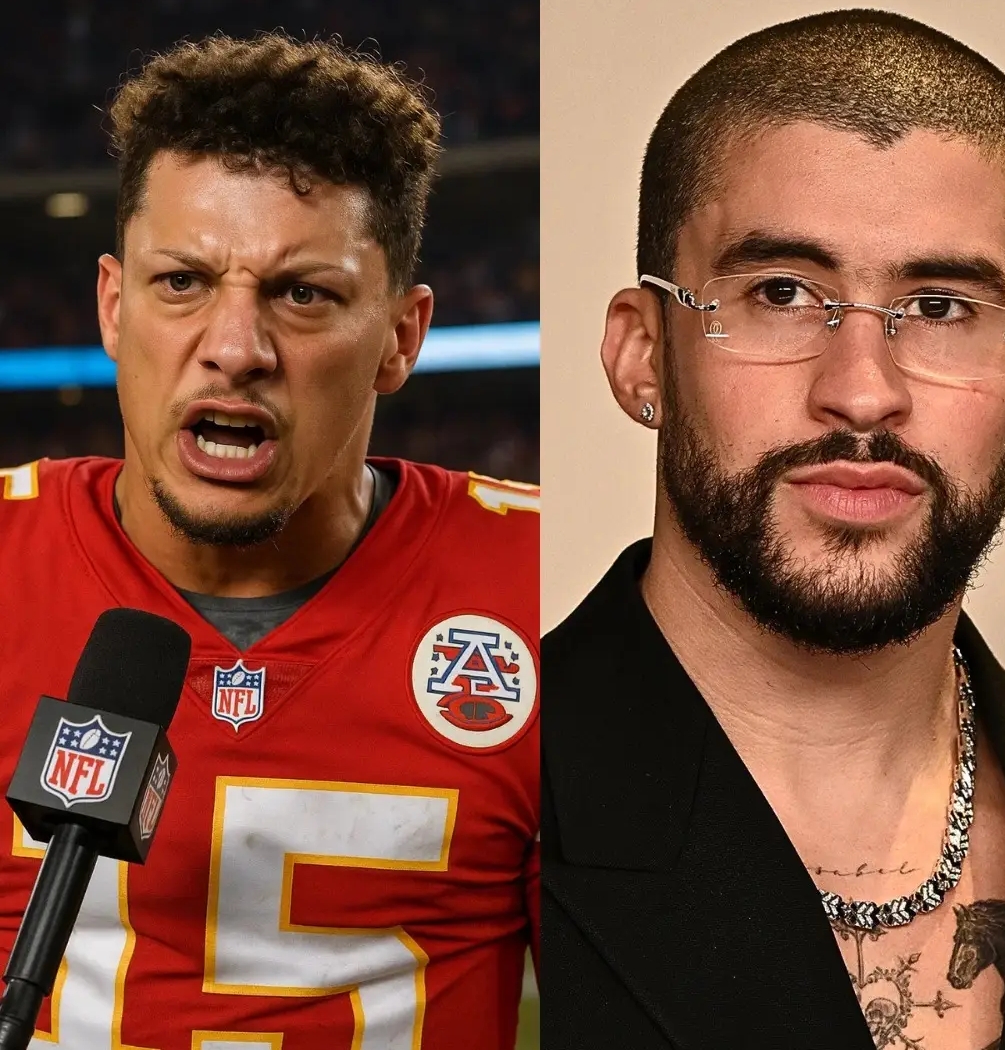CELEBRITY
ONE MORE: Super Bowl Shock: Patrick Mahomes SLAMS NFL for Picking Bad Bunny — “They’ve Declared War on America!”

The NFL may have ignited its fiercest cultural fight in years. In a flurry of remarks that ricocheted across sports talk shows and social media feeds, Kansas City Chiefs quarterback Patrick Mahomes criticized the league’s decision to tab Bad Bunny as the Super Bowl halftime headliner, arguing the booking risks turning America’s biggest game into a referendum on politics instead of a celebration of football. The comments—surprising in both timing and tone for a face of the league—instantly polarized fans, advertisers, and even some former players who warned the backlash could overshadow the game itself.
Mahomes framed his objection around what he called the “unifying spirit” of Super Bowl Sunday. The halftime stage, he argued, should be programmed to draw the broadest possible audience, not to provoke ideological battles. He accused league decision-makers of prioritizing headlines over harmony, insisting that the country is looking for common ground and that halftime should function as a cultural truce. While Mahomes did not retract the sharper edges of his critique, he emphasized that his quarrel is with process and perception, not with any one performer’s right to make music.
Inside league circles, the reaction was swift and complicated. Entertainment partners plan halftime productions months in advance, coordinating staging, guest cameos, and broadcast integration under tight secrecy. Reversing course would be costly and logistically daunting. Still, Mahomes’ stature ensures the league cannot simply shrug off the moment. Executives privately acknowledged the optics problem: when an MVP-level star publicly questions the headliner, the discussion inevitably shifts from playlists to principles—who decides what “fits,” and how the NFL defines the word “inclusive” for an audience that spans generations and genres.
Fans split along familiar fault lines. Supporters of Mahomes lauded him for saying out loud what they claim many viewers feel—that the show should lean into broadly shared classics. Critics countered that the Super Bowl is a global event and that the halftime slot has always doubled as a showcase for artists who transcend genre boundaries. The debate quickly expanded beyond a single booking to a larger argument about whether America’s tentpole broadcasts can hold multitudes without tearing at the seams.
Advertisers and brand strategists tracked the discourse with clinical attention. For sponsors who spend millions to align with the Super Bowl’s vast audience, controversy is a double-edged sword—amplifying reach while threatening to alienate key demographics. Several media buyers floated a middle path: keep the headliner and emphasize the show’s entertainment-first mission, spotlighting musicianship and guest collaborations designed to feel celebratory rather than combative.
Mahomes’ critics urged restraint, noting that halftime speculation often fuels outrage long before a single note is played. Supporters urged the league to convene a more transparent advisory process, bringing players and fans into the conversation earlier to reduce late-stage blowups. Both sides agreed on one point: however the NFL proceeds, it must reassure viewers that the game sits at the center of the broadcast—and that halftime, however star-studded, exists to elevate, not eclipse, the sport.
Whether the league answers with a statement, a reframe, or silence, the stakes are now unmistakable. A 12-minute performance has become a litmus test for how the NFL navigates culture in an era when entertainment and identity politics routinely collide. Football will still decide a champion. But thanks to a quarterback’s microphone, the halftime show will decide something else—how big the tent really is, and who feels welcome under it.












